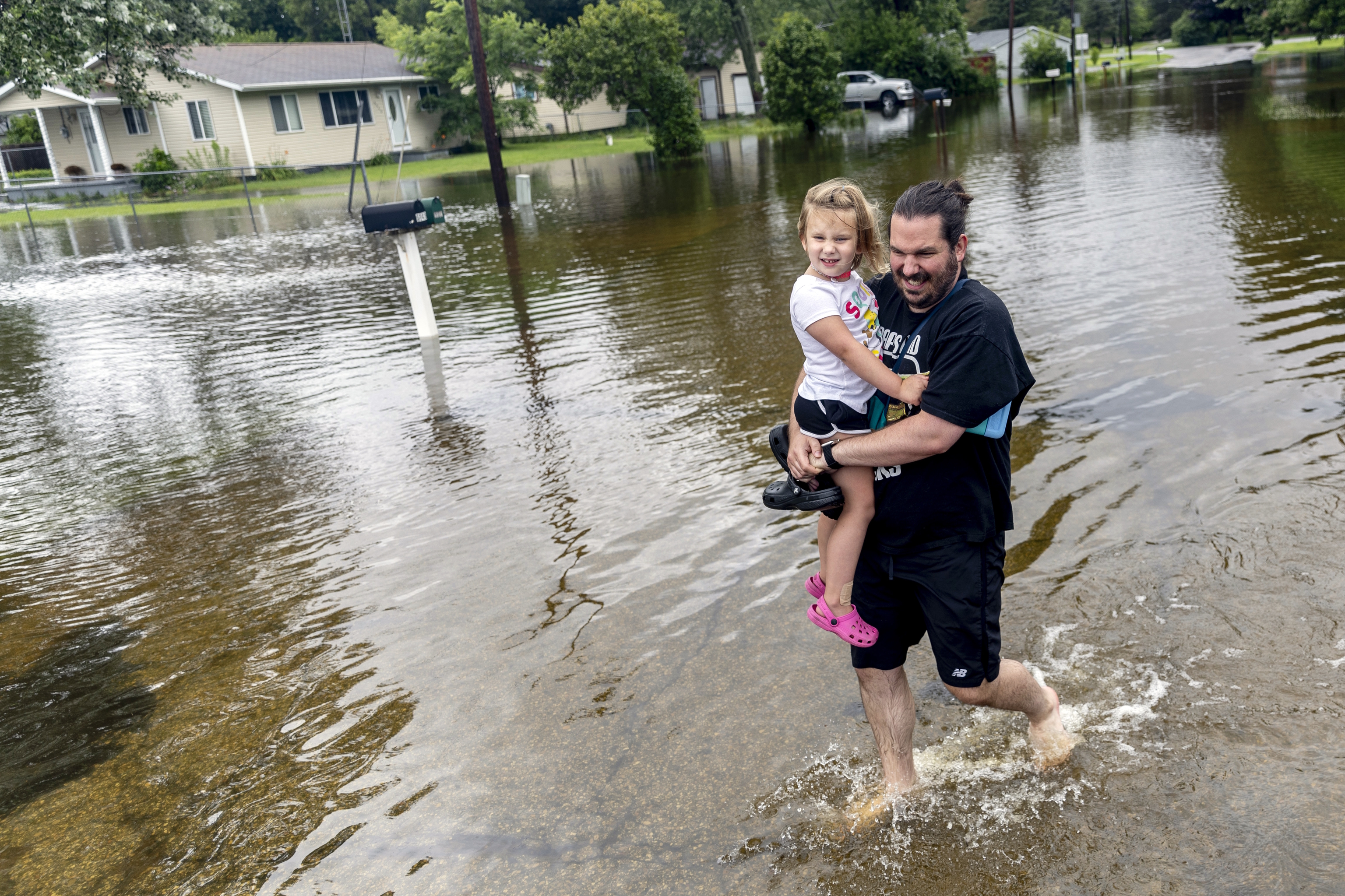Areas of central Vermont, which was hit hard by last July's flooding, have suffered some of the heaviest damage. Roads and homes were reportedly flooded in the city of Barre.
Beryl, which landed in Texas on Monday as a Category 1 hurricane, was a post-tropical cyclone that brought tornadoes and flooding from the Great Lakes to northern New England after leaving millions in the Houston area without power.
Parts of northern New York and New England, including Vermont, remained under flood watches or warnings early Thursday. Thunderstorms associated with Beryl were forecast for much of the East Coast through Friday, the National Weather Service said.
In Vermont, the weather service had said Wednesday the storm "will not be like last July's catastrophic flooding but will still pose real dangers where flash flooding occurs."
In a Wednesday night update, Vermont Emergency Management said there had been an unspecified number of evacuations and road closures due to flooding, primarily in the central part of the state.
"Vermonters and visitors are encouraged to seek higher ground should floodwaters approach," the statement said.
Rescue teams and the National Guard were at the ready, the agency said.
Vermont, far inland, nonetheless has experience with tropical weather. Tropical Storm Irene dumped 11 inches of rain on parts of Vermont in 24 hours in 2011. The storm killed six in the state, washed homes off their foundations, and damaged or destroyed more than 200 bridges and 500 miles of highway.
Beryl has been blamed for at least seven U.S. deaths — one in Louisiana and six in Texas — and at least 11 in the Caribbean. More than 1.3 million homes and businesses in Texas still lacked electricity early Thursday, down from a peak of over 2.7 million on Monday, according to PowerOutage.us.
The storm has caused at least $3.3 billion in damage in the United States, Mexico and the Caribbean, according to Karen Clark & Company, a Boston-based firm that works with insurance companies to estimate disaster costs.
It calculated a flash estimate Thursday of $2.7 billion in privately insured U.S. losses, along with $510 million in the Caribbean and $90 million in Mexico. The estimate is only for insured properties and does not include homes covered by the U.S. National Flood Insurance Program, so total losses will be higher.
